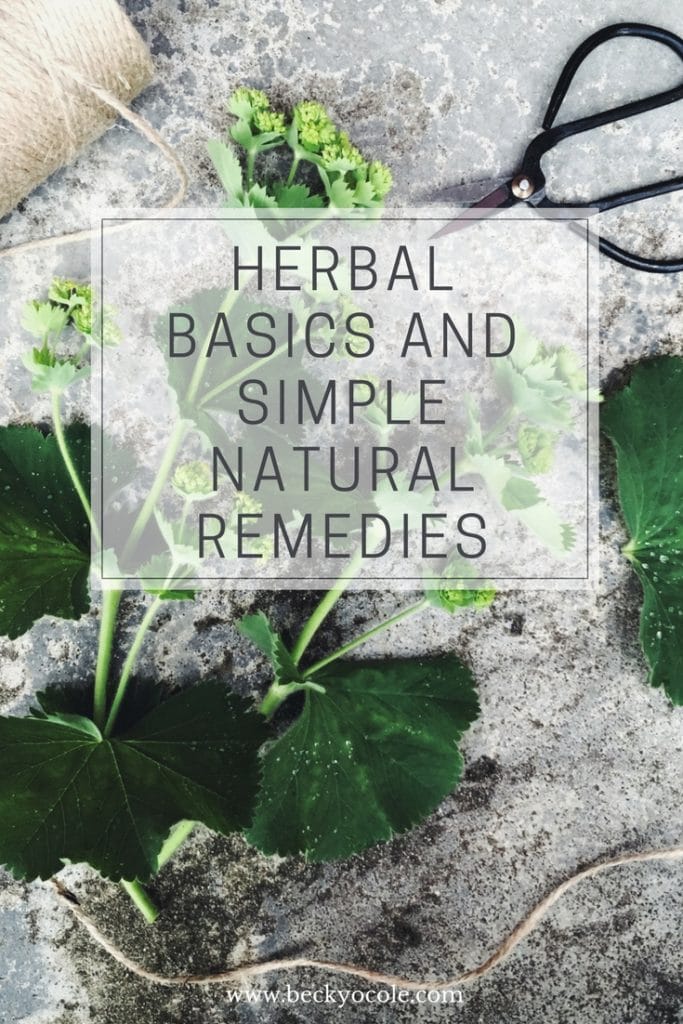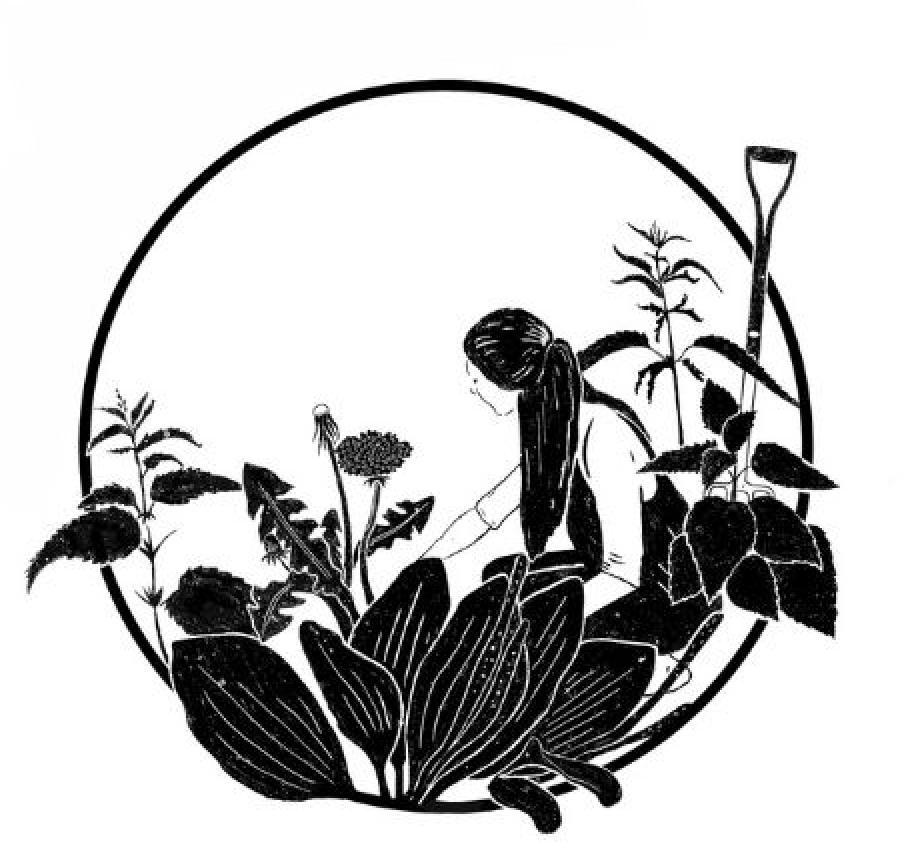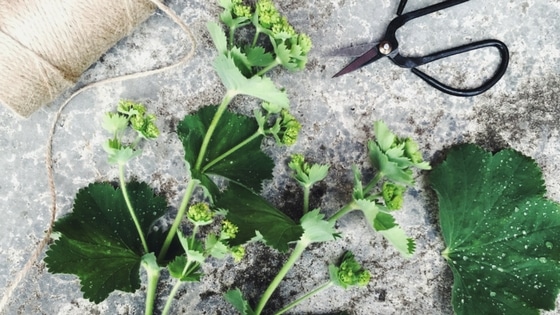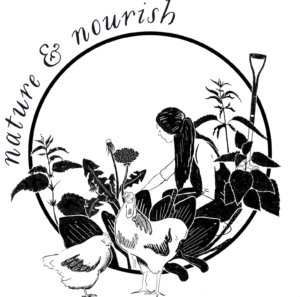Hello lovelies, I’m writing this in my snug little cottage sitting room on a February morning. I have the log fire burning away and Charlie’s taken the baby down to the goats so I’m baby free and can finally sit down to write about one of my favourite topics-herbs and herbalism!
How I got Started with Herbalism
I feel like Herbs are sometimes overlooked as just a seasoning or something we consume in a tea but once you get started understanding each plant and their properties, herbs can become a fascinating subject that really connects you further with nature as well as providing you with natural remedies, delicious flavours and/or mood altering scents. Ps. Herbalism is the study and use of herbs in medicinal ways.
Growing up in the countryside I spent much of my time exploring plants. Being a quiet and curious child I was fascinated by the dew drops on the Alchemilla Vulgaris, the smell of lavender in summer and the sweetness of clover. I’d happily nibble on grass, steal the nectar from the nasturtium flowers and use ribwort plantain in games.
Of course, We also had the usual culinary herbs in the garden. A spikey bush of rosemary, mint (always out of control and popping up all over the place), lemon balm with it’s tangy citrus scent, curly parsley (although I’ve since realised that flat leaf is far superior in the kitchen). And then there was thyme-my favourite with its unmistakable Mediterranean scent and ability to make my mouth water! During summer I’d often have a handful of feathery fronded fennel to snack on and finally bitter sage-mainly used as a gargle for sore throats or as a winter seasoning.
Almost every day we’d be sent out to the garden to bring mum a handful of one of these herbs for dinner that night. But what I didn’t realise was that the Lady’s mantle growing on the edge of the border was also a herb-a medicinal one-and that the lavender, red clover, plantain and nasturtiums of my childhood were also considered herbs and had a wealth of healing properties to discover.
As I grew older my fearless curiosity waned and it took a number of years before I began to explore herbalism again. I’ve since completed a certificate in medicinal herbalism and am looking forward to growing some more unusual varieties of herbs in the garden this summer. If you want to check out my favourite courses then head over to the Herbal Academy to see their beautiful online courses all about herbalism, herbs and natural remedies. (Carry on reading for the basics of herbalism!)

Using Herbs aka The Basics of Herbalism.
Herbs can be used in so many different ways. Internally through tinctures, teas and syrups. Externally through baths, salves and aromatherapy.
My favourite way to start with herbs are through infusions and decoctions. Or, more commonly known as herbal teas. This is a comforting and pleasurable way of assimilating the goodness of herbs. The herb is simply submerged in water for 20 minutes and the strained and drunk. My favourite infusions at the moment are Chai, rose, a sleepy time blend and oat straw.
Tinctures are another herbal preparation but one that I’ve just recently begun to enjoy using. My first experience of tinctures was seeing those little bottles of herbal extracts behind the counters in health shops. Personally I’ve always felt a little intimated by them but since educating myself a bit more and making my own from scratch-I realize that tinctures are a brilliant tool to have in our first aid kits and anti-cold arsenal. In general, to make a tincture plenty of herb is submerged in alcohol. The alcohol gradually draws out the properties of the herb. After about a month you can sieve out the herb and use the left over liquid as an intense form of the herb. You only need a few drops of this one. My favourite is elderberry and turmeric. I have a recipe for making your own herbal tinctures here.
Honeys and syrups are another two lovely ways to use herbs internally. I made a delicious ginger honey last year, which I couldn’t stop eating, but was perfect for clearing away a cold. Making your own herbal honey is a similar process to making a tincture although you use honey instead of water. To make a rose petal honey I simply mix rose petals and honey together in a jar and leave to infuse for 4 weeks then warm, strain and use. As for syrups, this is my go-to for sore throats and colds. It has all the benefits of an infusion, tincture and honey and it also soothes irritated throats. Elderberry syrup is a must have in any home!
Apart from herbal remedies I also use herbs constantly in my kitchen. At our home, vinegar infused with nettles and chickweed is made in Springtime. I sprinkle salads and cakes with edible flowers such as rose, calendula and violet throughout the summer months. And salts, sauces, pestos, herbal beer, oils, energy balls, and broths are all regular creations in my cottage kitchen.
Finally herbs can also be used externally for mood and health boosting benefits. I like to infuse oils with favourite seasonal herbs such as calendula or elderflower and create salves, massage oils, and body butters. I’m also an essential oil addict and use them daily for bath salts, aromatherapy and baths. My go-to recipe for a soothing bath is a cup full of Epsom salts and 3 drops of lavender oil. Utter bliss!
Learning about Herbalism
If you want to learn more about Herbs then you’re in the right place! This Spring I’m running a series all about using herbs on the blog so do sign up for my newsletter below so you can receive each post once it’s live! If youre looking to get a certificate or more specific training then I cant recommend the Herbal Academy enough.
Now I’d love to know-What is your FAVOURITE way of using herbs?
Have a beautiful week!
Becky x
*Please use herbs safely and get professional advice if in doubt.
*some of my posts contain affiliate links. If it does you can be sure they are only for products I adore 🙂
LISTEN TO THIS POST OVER ON ITUNES OR ON YOUTUBE



